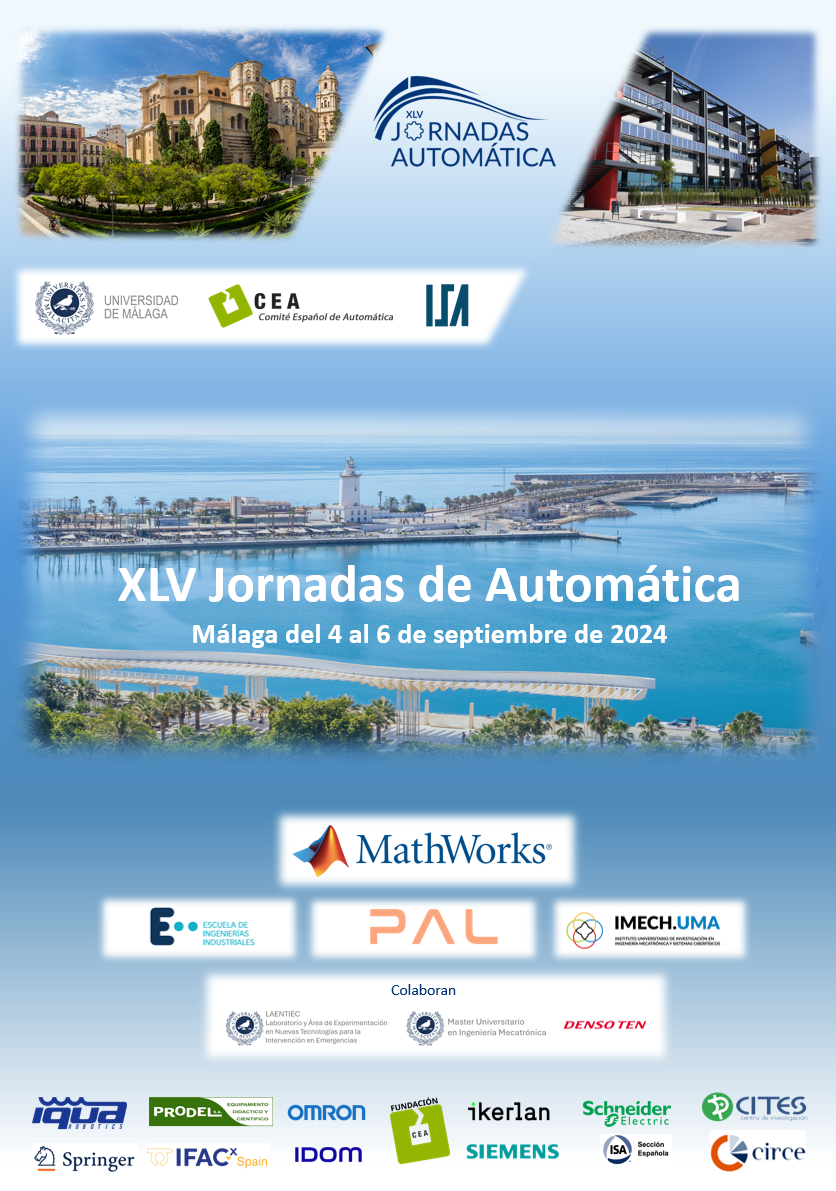Exploring the evolution of olive-fruit electric capacitance during maturation as an indicator of oil content accumulation
DOI:
https://doi.org/10.17979/ja-cea.2024.45.10842Palabras clave:
Bioresponses, Biosensors in agriculture, Crop processes, Decision support systems, Grading systems and quality assessment, Precision agricultureResumen
Olive oil is a highly appreciated food product due to its outstanding nutritional profile. Because of the huge current and expected increasing demand, the olive sector is undergoing a transition to more productive approaches. In this respect, precision farming is increasingly playing an outstanding role aimed at yielding novel accurate spatial and temporal information in a variety of factors involved in olive growing and subsequent product transformation. In this context, this study explores the hypothesis that chemical transformations undergone by olive fruits during their maturation impact on their capability to store electric charge. Concretely, this work tries to elucidate how the electric capacitance of fruits is affected as oil content increases. The results obtained encourages to continue with further investigation, this with the final goal of developing specific devices, usable directly in the field, to characterise olive ripening in an easier and more cost-effective manner compared to traditional chemical methods.
Referencias
Barranco Navero, Diego, Fernandez Escobar, Ricardo, Rallo Romero, L. (2017). El cultivo del olivo (7a ed; L. R. R. D. B. N. Ricardo Fernandez Escobar, ed.). Madrid: Mundi-Prensa Libros.
Bellincontro, A., Taticchi, A., Servili, M., Esposto, S., Farinelli, D., & Mencarelli, F. (2012). Feasible application of a portable NIR-AOTF tool for on-field prediction of phenolic compounds during the ripening of olives for oil production. Journal of Agricultural and Food Chemistry, 60(10), 2665–2673. https://doi.org/10.1021/jf203925a
Butz, P., Hofmann, C., & Tauscher, B. (2005). Recent Developments in Noninvasive Techniques for Fresh Fruit and Vegetable Internal Quality Analysis. Journal of Food Science, 70(9), R131–R141. https://doi.org/10.1111/J.1365-2621.2005.TB08328.X
Cayuela, J. A., & Camino, M. del C. P. (2010). Prediction of quality of intact olives by near infrared spectroscopy. European Journal of Lipid Science and Technology, 112(11), 1209–1217. https://doi.org/10.1002/ejlt.201000372
Fountas, S., Aggelopoulou, K., & Gemtos, T. A. (2015). Precision agriculture: Crop management for improved productivity and reduced environmental impact or improved sustainability. In D. A. Eleftherios Iakovou, Dionysis Bochtis, Dimitrios Vlachos (Ed.), Supply Chain Management for Sustainable Food Networks (pp. 41–65). https://doi.org/10.1002/9781118937495.ch2
Ghanbari, R., Anwar, F., Alkharfy, K. M., Gilani, A. H., & Saari, N. (2012). Valuable Nutrients and Functional Bioactives in Different Parts of Olive (Olea europaea L.)—A Review. International Journal of Molecular Sciences 2012, Vol. 13, Pages 3291-3340, 13(3), 3291–3340. https://doi.org/10.3390/IJMS13033291
Guzmán, E., Baeten, V., Pierna, J. A. F., & García-Mesa, J. A. (2012). A portable Raman sensor for the rapid discrimination of olives according to fruit quality. Talanta, 93, 94–98. https://doi.org/10.1016/j.talanta.2012.01.053
Harker, F. R., & Forbes, S. K. (1997). Ripening and development of chilling injury in persimmon fruit: An electrical impedance study. New Zealand Journal of Crop and Horticultural Science, 25(2), 149–157. https://doi.org/10.1080/01140671.1997.9514001
Harker, F. R., & Maindonald, J. H. (1994). Ripening of Nectarine Fruit (Changes in the Cell Wall, Vacuole, and Membranes Detected Using Electrical Impedance Measurements). Plant Physiology, 106(1), 165–171. https://doi.org/10.1104/PP.106.1.165
Kavdir, I., Buyukcan, M. B., Lu, R., Kocabiyik, H., & Seker, M. (2009). Prediction of olive quality using FT-NIR spectroscopy in reflectance and transmittance modes. Biosystems Engineering, 103(3), 304–312. https://doi.org/10.1016/j.biosystemseng.2009.04.014
Noguera, M., Millan, B., Aquino, A., & Andújar, J. M. (2022). Methodology for Olive Fruit Quality Assessment by Means of a Low-Cost Multispectral Device. Agronomy, 12(5), 979. https://doi.org/10.3390/agronomy12050979
Rehman, M., Abu Izneid, B. A. J. A., Abdullah, M. Z., & Arshad, M. R. (2011). Assessment of quality of fruits using impedance spectroscopy. International Journal of Food Science & Technology, 46(6), 1303–1309. https://doi.org/10.1111/J.1365-2621.2011.02636.X
Salguero-Chaparro, L., Baeten, V., Fernández-Pierna, J. A., & Peña-Rodríguez, F. (2013). Near infrared spectroscopy (NIRS) for on-line determination of quality parameters in intact olives. Food Chemistry, 139(1–4), 1121–1126. https://doi.org/10.1016/j.foodchem.2013.01.002
Stella, E., Moscetti, R., Haff, R. P., Monarca, D., Cecchini, M., Contini, M., & Massantini, R. (2015). Review: Recent Advances in the Use of Non-Destructive near Infrared Spectroscopy for Intact Olive Fruits. Journal of Near Infrared Spectroscopy, 23(4), 197–208. https://doi.org/10.1255/jnirs.1169
Varlan, A. R., & Sansen, W. (1996). Nondestructive Electrical Impedance Analysis in Fruit: Normal Ripening and Injuries Characterization. Electro- and Magnetobiology, 15(3), 213–227. https://doi.org/10.3109/15368379609012878
Descargas
Publicado
Número
Sección
Licencia
Derechos de autor 2024 Arturo Aquino Martín, Miguel Noguera, Juan Manuel Enrique, Andrés Mejías, Rocío Moro, Daniel Argüello

Esta obra está bajo una licencia internacional Creative Commons Atribución-NoComercial-CompartirIgual 4.0.





